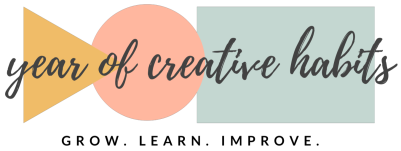Learning how to draw can be a difficult process, but it can be hugely rewarding. We’ve all seen the incredible art created by people within various mediums, and there’s a reason that some of the best art is created by those who spend years developing their skill set and technique. If you’re just getting started with your own art, here are some tips on how to improve your skills:
Get familiar with your pencils
Selecting the correct pencil is very important. A pencil that is too soft or too hard will ruin your work. Pencils that are too hard will scratch the paper, whilst pencils that are too soft will result in a light line that won’t show. Pencils typically have a C, H, or 2H number on them to indicate their hardness.
Take control of your pencil
There’s a misconception that artists know best when it comes to drawing. But the truth is that there are many different types of pencils, each with its own properties. Some of them are for shading, while others are better for fine sketching and illustrating. If you’re just getting started, it’s important to know which pencils to use, when, and how to use them.
Try various mark-making techniques
A pencil can make many more marks than a simple line. One easy alternative mark to try as a beginner is smudges. Use the pencil to lay down a decent amount of graphite on the page, and then use your fingertips to smudge the pencil across the page. This technique relies on your fingers, not the pencil, as your main tool, and is perfect for creating the illusion of shade.
Create line variations
A line is the defining aspect of art. It is what makes it interesting and artistic. Sharp lines create the impression of strength or anger, whilst soft lines imply gentleness. The use of a variety of lines including width, length, texture, thickness, etc. will also help you to develop your skills, allowing you to practice different types of art.
Avoid bad hand posture
Your hand is your best friend and worst enemy when using pencils. Whilst your hand can do amazing things, it can also ruin your work if you place it incorrectly. Never let your hand rest on the page, as it can smudge your work and create blurred lines in places you don’t want them. A drawing table will help you to keep a good posture and allows for a wider range of motion.
70/30 rule application
Art can be intimidating, especially if you’re not versed in art theory. That’s why, when it comes to creating art, the 70/30 rule is a great guide to help. Whether it’s painting, drawing, or mixed media, the rule states that 70% of your work should be mastering technique no matter what medium you choose, while 30% of your time should be spent on creating art. In short, if you can master the technique, you’ll be prepared to create your art when you feel like it.
Avoid symmetry, but look for balance
An artist’s worst enemy is symmetry, especially when drawing human faces. Human faces are not naturally symmetrical, but you will be tempted to draw them with identical features on either side. Avoid this and try to find balance instead. If you’re drawing an object that requires symmetry, trial, and error is your best bet. No amount of paper-folding or mirror trickery will help – you’ve just got to practice!
Distinguish different textures
The wonderful thing about art is that it helps us explore the differences that exist within the world around us. Whether you see the same shapes as everyone else or you see them differently, looking at art can open your eyes to different aspects of what surrounds you. It also gives you a chance to have fun while exploring art since there are so many different ways to create it. Some artists choose colors, others choose shapes, and others choose textures. Textures are all around us, and they help give art that unique quality that helps us look at it and appreciate it more deeply.
To draw better, it’s important to have the right tools, materials, and knowledge. There are wide varieties of art supplies, but it’s important to have the basics. It doesn’t mean you shouldn’t experiment with different media, but if you need something simple, then a pencil, a sketchbook, and a piece of paper are all you need to get started.

